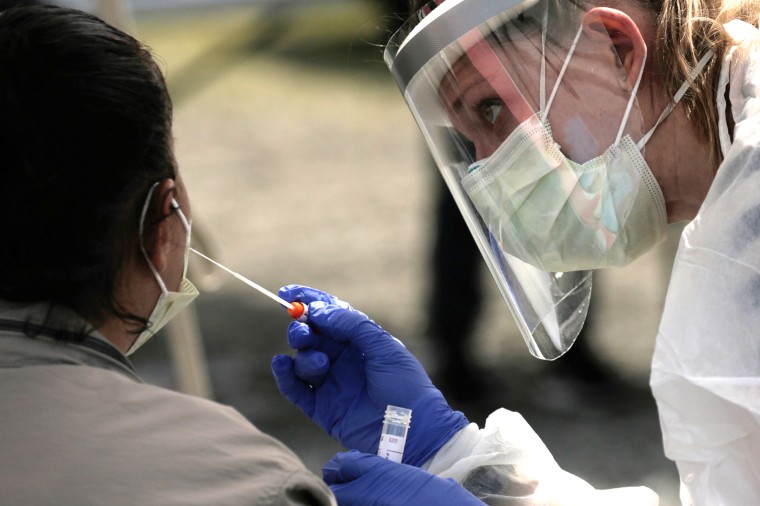In late April, as federal policymakers negotiated the latest economic aid package, one of the sticking points was a specific Democratic demand: Dems insisted that the Trump administration had to prepare a national testing strategy. It was not open ended: the White House was required to submit the plan to lawmakers by Sunday, May 24.
Eventually, Republican negotiators accepted the provision, the bill passed, and Donald Trump signed the package into law.
The good news is, the White House met the agreed upon deadline. The bad news is, the new national testing strategy isn't much of a testing strategy. The New York Times reported over the holiday weekend:
The Trump administration's new testing strategy, released Sunday to Congress, holds individual states responsible for planning and carrying out all coronavirus testing, while planning to provide some supplies needed for the tests. The proposal also says existing testing capacity, if properly targeted, is sufficient to contain the outbreak. But epidemiologists say that amount of testing is orders of magnitude lower than many of them believe the country needs.
The previous plan from Team Trump was to put states at the forefront of the effort, leaving governors in charge of crafting their own testing strategies, while the federal government makes vague commitments about providing necessary resources. The new plan looks an awful lot like the old plan.
The Washington Post obtained the 81-page document, which is called the "Covid-19 Strategic Testing Plan." Even the name proved to be a point of contention: I spoke to a Capitol Hill staffer over the weekend who noted that the law required the administration to develop a "national" testing strategy, and the White House report omitted the word "national" from the title.
Democratic leaders from both chambers issued a joint statement on Sunday, panning the "disappointing" report as inadequate.
"In this document, the Trump Administration again attempts to paint a rosy picture about testing while experts continue to warn the country is far short of what we need," the statement read in part. "We still need clear explanations for how targets were set, how they will be met, and what will be done if they are not. The Trump Administration still does not take any responsibility for ramping up our nation's testing capacity, instead pushing the burden onto the states -- forcing states to compete with each other to procure vital supplies to administer tests from the private market."
Scott Becker, executive director of the Association of Public Health Laboratories, spoke to the NYT and added that while it's reasonable to expect states to implement some aspects of the testing, it makes less sense to expect states to compete for supplies in a global supply-chain marketplace.
"That's our biggest question, that's our biggest concern, is the robustness of the supply chain, which is critical," Becker said. "You can't leave it up to the states to do it for themselves. This is not the Hunger Games."
At this point, the White House appears to disagree.

